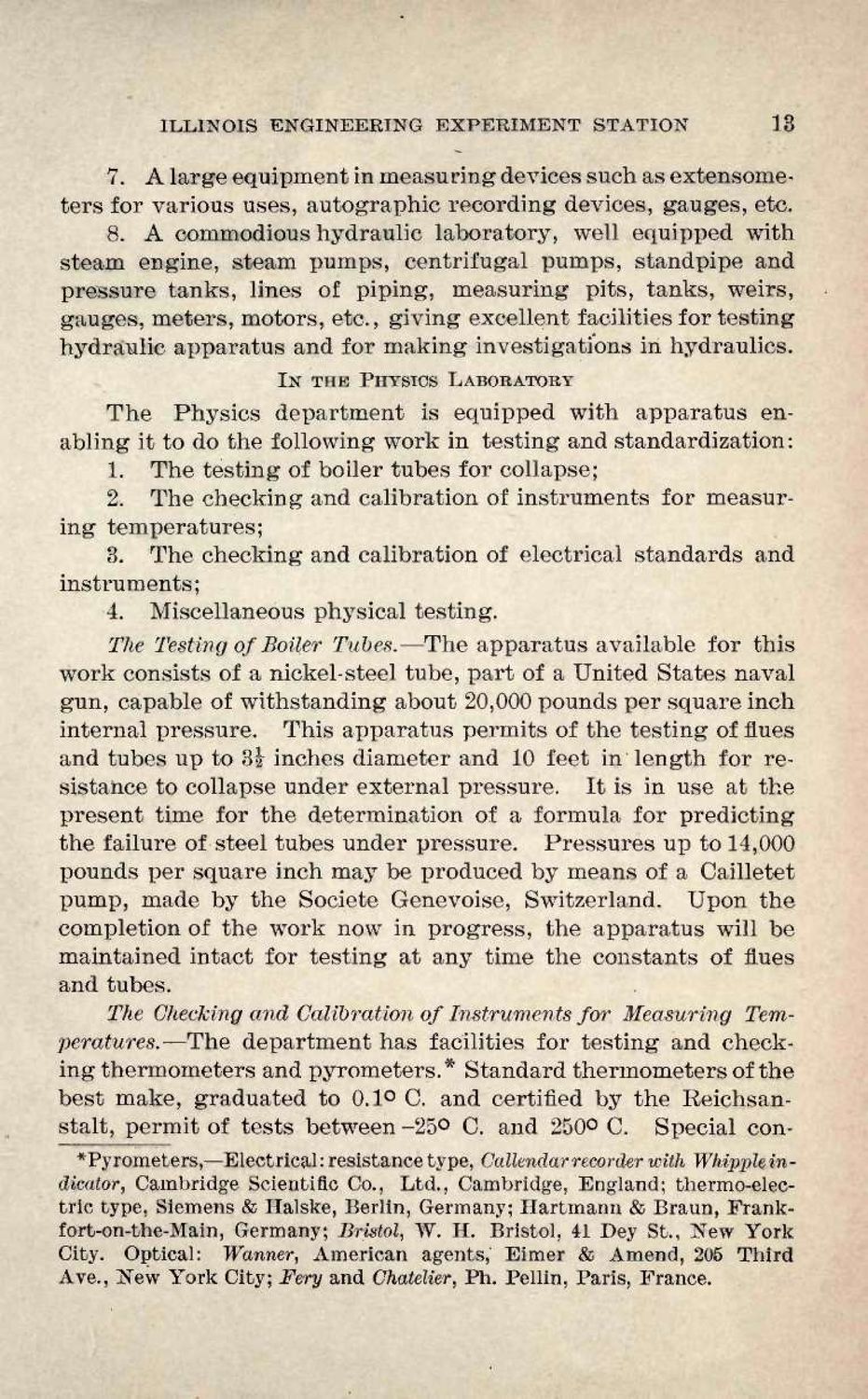| |
| |
Caption: Book - First Years of Engineering Experiment Station (1906)
This is a reduced-resolution page image for fast online browsing.

EXTRACTED TEXT FROM PAGE:
ILLINOIS ENGINEERING EXPERIMENT STATION 13 7. A large equipment in measuring devices such as extensometers for various uses, autographic recording devices, gauges, etc. 8. A commodious hydraulic laboratory, well equipped with steam engine, steam pumps, centrifugal pumps, standpipe and pressure tanks, lines of piping, measuring pits, tanks, weirs, gauges, meters, motors, etc., giving excellent facilities for testing hydraulic apparatus and for making investigations in hydraulics. I N T H E PHYSICS LABORATORY T h e Physics department is equipped with apparatus enabling it to do the following work in testing and standardization: 1. T h e testing of boiler tubes for collapse; 2. The checking and calibration of instruments for measuring temperatures; 3. The checking and calibration of electrical standards and instruments; 4. Miscellaneous physical testing. The Testing of Boiler Tubes.—The apparatus available for this work consists of a nickel-steel tube, p a r t of a United States naval gun, capable of withstanding about 20,000 pounds per square inch internal pressure. This apparatus permits of the testing of flues and tubes up to 3i inches diameter and 10 feet in length for resistance to collapse under external pressure. I t is in use at the present time for the determination of a formula for predicting the failure of steel tubes under pressure. P r e s s u r e s up to 14,000 pounds per square inch may be produced by means of a Cailletet pump, made by t h e Societe Genevoise, Switzerland. Upon t h e completion of the work now in progress, the apparatus will be maintained intact for testing at any time the constants of flues and tubes. The Checking and Calibration of Instruments for Measuring Temperatures.—The department has facilities for testing and checking thermometers and pyrometers.* Standard thermometers of the best make, graduated to 0.1° C. and certified by the Reichsanstalt, permit of tests between -25° C. and 250° C. Special con*Pyrometers,—Electrical: resistance type, Callendar recorder with Whippleindicator, Cambridge Scientific Co., Ltd., Cambridge, England; thermo-electric type, Siemens & Halske, Berlin, Germany; Hartmann & Braun, Frankfort-on-the-Main, Germany; Bristol, W. H. Bristol, 41 Dey St., New York City. Optical: Wanner, American agents,' Eimer & Amend, 205 Third Ave., JSTew York City; Fery and Chatelier, Ph. Pellin, Paris, France.
| |